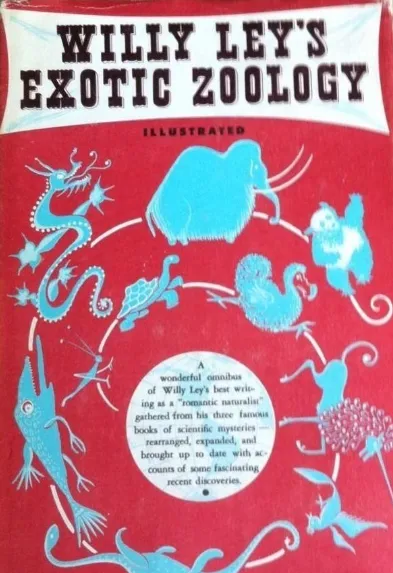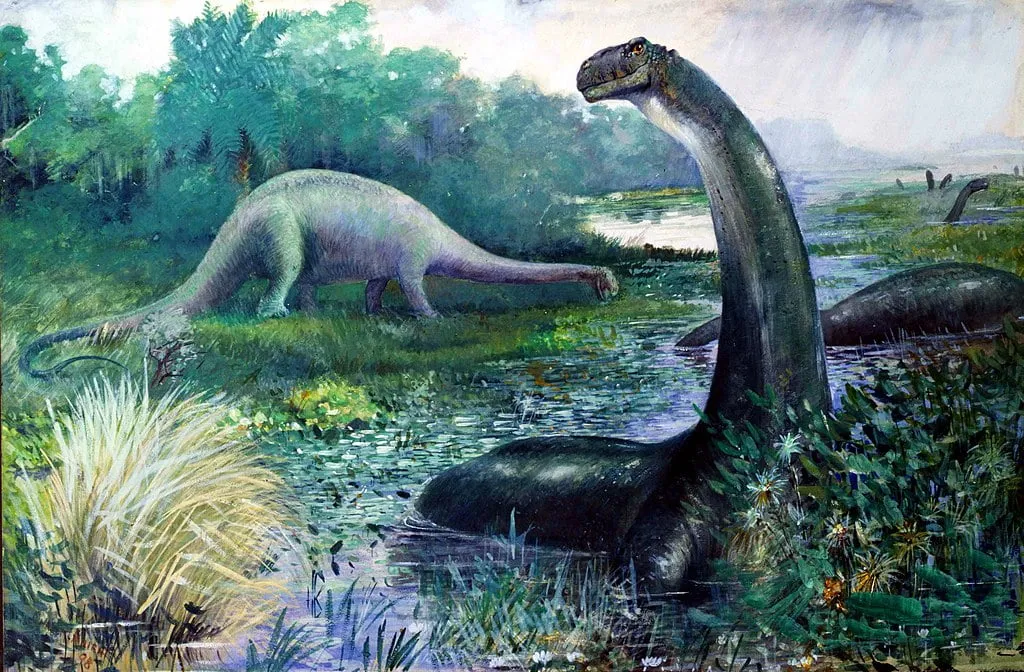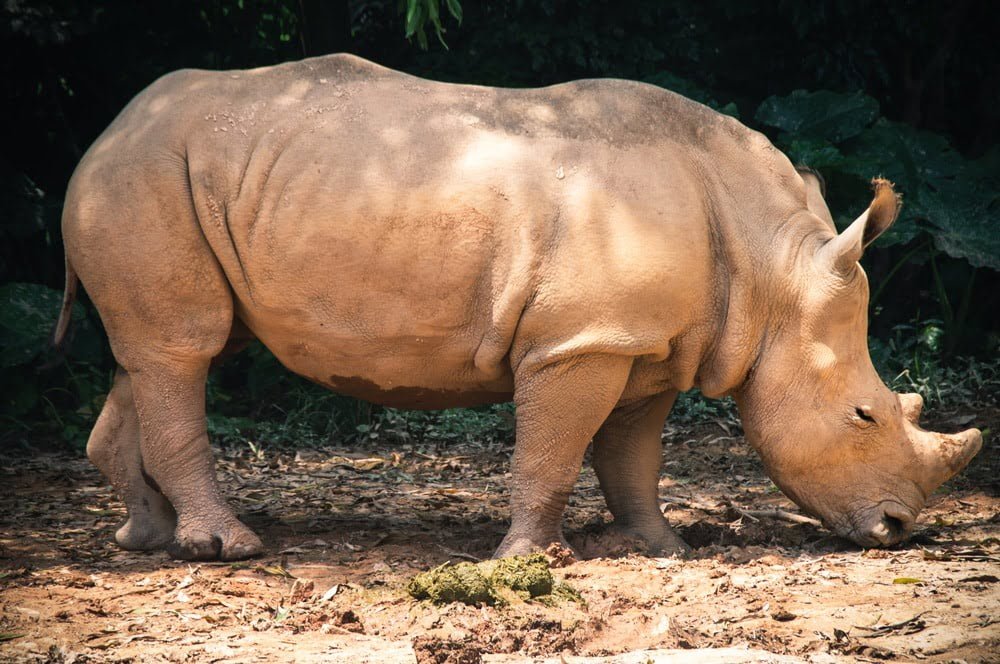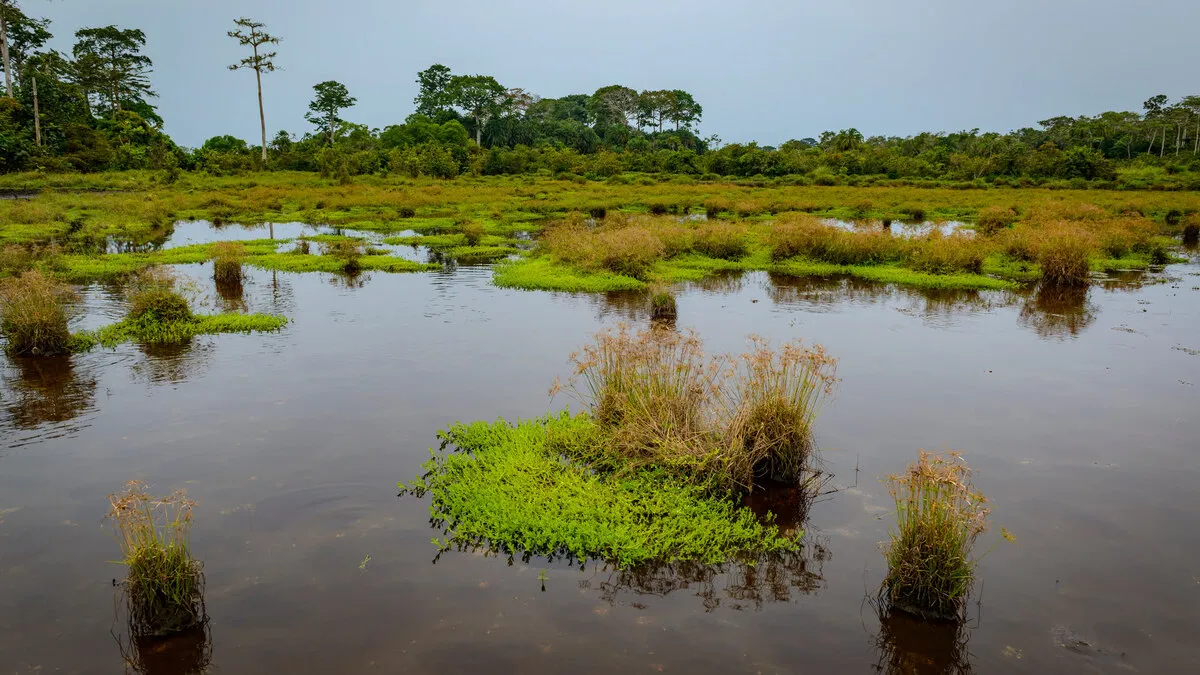The Congo Basin has always been home to myths and legends. Among these, the most bizarre is the myth of living dinosaurs. You too are probably here in search of the famous Mokele-mbembe.
Mokele-mbembe is often described as a modern sauropod dinosaur hidden in the rainforests of Africa. Does Mokele-mbembe exist or is this just a legend?
The Mokele-mbembe remains only a myth. Scientific evidence confirms the extinction of dinosaurs 66 million years ago. There is no verifiable proof of non-avian dinosaurs in the Congo or elsewhere in modern times.
So where did this myth originate? Could there be any truth to this legend?
This topic gets pretty interesting as we explore its origins. I can’t offer evidence of living dinosaurs, but that doesn’t mean there aren’t a few twists to this story. Keep reading.
The Legend of Mokele-Mbembe and Other Congo Dinosaurs
The persistence of the Mokele-Mbembe legend can be attributed to several factors.
- Congo’s vast and impenetrable rainforests frightened explorers in the Western world, who suggested the possibility of undiscovered species.
- The human fascination with newly described dinosaurs led to public fascination with any stories that they might still roam in faraway lands.
- A laundry list of amateur explorers, frauds, and Young-Earth Creationists seeking to discredit evolution.
Other Legendary Creatures of the Congo
This article focuses on Mokele-mbembe as it’s the most well-known dinosaur cryptid or ‘neodinosaur.’ There were many other dinosaur-like creatures reported over the years across the world.
It’s easy to go down the rabbit hole looking into these. I suggest you do that after reading this article. Here are the most notable candidates for Africa’s living dinosaurs and their descriptions:
Emela-Ntouka: Described as an elephantine, rhinoceros-like amphibian, the Emela-Ntouka is notable for its large horn on the nose and heavy, crocodile-like tail. It is allegedly aggressive and found in the rainforest swamps and rivers of the Republic of the Congo and the southwest Central African Republic.
Mbielu-Mbielu-Mbielu: This cryptid is described as a river-dwelling animal with distinctive large “planks” on its back, which are often covered in green algal growths. It is reported most active in the late afternoon and inhabits the Likouala River in the Republic of the Congo.
Kongamato: A flying reptilian creature, the Kongamato was reported with a beak with pointy teeth, and featherless, leathery reddish wings. Sightings put it between 2 to 4 feet (1 meter) long with a wingspan of 3 to 7 feet (1-2 meters). It is reported in East, Central, and South Africa.
Chipekwe: The Chipekwe is supposedly a massive, reptilian creature with a hairless, dark body and a single smooth horn. Known for its aggression towards humans and hippos, it’s said to reside in Lake Bangweulu in Zambia.
Nguma-monene: This large, serpentine creature is reported to be about 30 to 40 feet long (10 to 12 meters) and 2 to 3 feet in diameter (1 meter), with short legs, greyish-brown skin, a snake-like head, forked tongue, and a serrated ridge on its spine. It is found in Eastern Cameroon and along the Motaba River in the Republic of the Congo.
Irizima: The Irizima is said to possess a black body, grow larger than a hippopotamus, and exhibit rhinoceros-like horns. Its suggested habitat includes the swamps around Lake Edward in Uganda and the Democratic Republic of the Congo.
These are the brief descriptions of the sparse information available. Credit to cryptidarchives.fandom.com, fairytalesandmyths.com, and abookofcreatures.com. These sites provide the most comprehensive accounts of neodinosaurs I’ve found.
Where was Mokele-Mebembe first referenced? We must travel back to the early 1900s.
Cultural Stereotypes Created the Mokele-mbembe
Of all places, why do you think people assumed dinosaurs would inhabit Africa? The stories of dinosaurs in the Congo were a reflection of the West’s racial biases and its view of Africa.
Unsettling for sure, but we must look into how racial stereotypes gave birth to this myth and kept it alive. Africa, in the eyes of many Westerners, was a place of wild, untamed nature.
While it was certainly not as widely populated as Europe or the Americas, Africa had many advanced nations of indigenous people. Through the eyes of people at that time, they were seen as primitive.
The myth was significantly propelled by the colonial mindset, which viewed Africa as the “dark continent.” This term was laden with implications of ignorance and primitiveness, suggesting a land untouched by civilization and ripe for exploration.
While this might seem benign, it wasn’t. ThoughtCo explains how this perception was a deliberate attempt to discredit the people of Africa as savages to garner public support to colonize the region.
This colonialist view influenced popular culture and the approach of some scientists and explorers of the time. Their expeditions were often tinged with a sense of superiority rather than a genuine effort to understand the wildlife and the culture of indigenous people.
You can watch this great video by Trey the Explainer here. There is a great deal of additional information and backstory on this topic.
Now that that depressing bit of history is out of the way, we can look into explorations that uncovered evidence of living dinosaurs in Africa. Well, they attempted to uncover evidence at least.
Key Figures in the Search for Congo Dinosaurs
So who decided that searching for living dinosaurs was a good idea? These pioneers found a great deal of public interest from dinosaur enthusiasts and religious groups.
The discovery of Brontosaurus by Othniel Charles Marsh in 1879 marked a significant moment in our culture, giving us one of the most iconic dinosaurs to ever live. The rapid increase in fossil discoveries, driven in part by the Bone Wars, led to a great deal of media coverage.
The dinosaur’s depiction in advertising, motion pictures, television, and even museum reconstructions worldwide entrenched Brontosaurus as the archetypal dinosaur in the minds of many. This widespread representation contributed to the enduring fascination with dinosaurs and played a role in popularizing paleontology among the general public.
It also made people want to believe in living dinosaurs. In 1912 Sir Arthur Conan Doyle’s book The Lost World captured the attention of science fiction fans. The story details an adventure into remote jungles where dinosaurs still thrive in a primitive land.
Yes, this story came complete with savage natives and all the racist attitudes of the time. In our article on dinosaur books for adults, we mention the overt racism of the time. This book ties into the earlier claim that stereotypes about indigenous people of foreign lands played a role in the lost world trope.
The rise of media depictions naturally influenced sightings of swamp-dwelling sauropods, but more on that later. Who started this craze?
Carl Hagenbeck’s Expeditions
In the early 1900s, Western explorers told stories from local tribes in Africa. The stories described a large creature with a long neck, similar to sauropod dinosaurs.
Carl Hagenbeck, a German explorer, was among the first to take these stories seriously. He speculated on the existence of dinosaur-like creatures in Africa and included it in his book, titled “Beasts and Men.”
Hagenbeck’s book, though based more on speculation than solid evidence, sparked a widespread fascination with the idea of living dinosaurs in Africa. His status led the media to credit his story as reliable, even though it was based on second-hand accounts.
In another article, we explore the impact of dinosaurs in media on public understanding. In this case, it was fake news that did the trick.
His venture, driven by dinosaur fervor and local legends, introduced the Western world to the possibility of creatures like Mokele-mbembe. This fueled public interest, paving the way for future explorations.
Willy Ley’s Influence on Public Perception
Willy Ley’s journey began in 1913 with his encounter with Captain Ludwig Freiherr von Stein zu Lausnitz. Lausnitz’s report detailed a giant reptile in the Congo Basin.
This early exposure sparked a lifelong interest, culminating in a dedicated chapter on Mokele-mbembe within his 1941 book, “The Lungfish, the Dodo, and the Unicorn.” Through vivid descriptions and analysis of various testimonies, Ley amplified the legend, solidifying the creature’s image in the public consciousness.
By 1959, Ley’s exploration of Mokele-mbembe reached new depths in his acclaimed work, “Exotic Zoology.” He meticulously examined eyewitness accounts and compared them to known dinosaurs.
His accessible writing style and scientific background gave the cryptid a sense of credibility. Ley’s work blurred the lines between myth and reality, making the existence of living dinosaurs seem more plausible.
However, it is crucial to recognize that Ley never advocated for blind belief. He acknowledged the lack of concrete evidence and emphasized the need for rigorous scientific inquiry.

His journey serves as a testament to the enduring allure of cryptozoology and the crucial role of responsible exploration in navigating the uncharted territories of the unknown. I would never say ignore the unknown, just be realistic about what we cannot explain, and never jump to conclusions. Unlike some others, as you’ll soon discover.
Roy P. Mackal’s Search for Mokele-mbembe
In the 1980s, the search for Mokele-Mbembe in the Congo’s Likouala swamps witnessed a significant shift with the involvement of American biologist Roy P. Mackal and zoologist James H. Powell Jr.
Mackal, a prominent figure in cryptozoology, and Powell, with his expertise in zoology, aimed to bring a more structured approach to the exploration of this elusive creature. Their collaboration marked a notable attempt to blend cryptozoological enthusiasm with zoological knowledge.
While Mackal focused on gathering anecdotal evidence from local sources, Powell brought a zoologist’s perspective to the expedition. Despite their combined efforts, the methodology still leaned heavily on folklore and second-hand accounts.
Mackal documented the expedition’s findings and theories in his book A Living Dinosaur? In Search of Mokele-Mbembe. Powell’s contribution, particularly his zoological expertise, added depth to the investigation, but the expedition ultimately fell short of providing evidence.
In his own words, Mackal admits his faults as an investigator. Rather than listening to the locals, he frequently disputed what they claimed as if there was some sort of cover-up.
They only provided him with what he wanted to hear after being led to give those answers. In this way, he was shaping the narrative he wanted to portray.
This collaboration between Mackal and Powell illustrates the complexities and difficulties in bridging the gap between cryptozoology and mainstream science. Their work, despite its flaws, contributed to the hype around the cryptid.
Modern Expeditions to Find Congo Dinosaurs
In the early 2000s, the quest for Mokele-Mbembe saw new participants in William Gibbons and David Woetzel. They launched expeditions intending to discover evidence that would support their creationist ideology.
Despite their dedication, these expeditions mirrored the shortcomings of earlier ones. Shockingly, they failed to produce any tangible evidence of the existence of Mokele-mbembe.
Their findings were largely based on personal testimonies and indirect reports. Sound familiar? We’ve covered this before, explaining why Behemoth and Leviathan were not dinosaurs.
Check out this full episode of MonsterQuest from 2009. It’s a good example of this line of work.
The methodology of Gibbons and Woetzel’s expeditions was heavily influenced by confirmation bias, as they interpreted findings in a way that supported their pre-existing beliefs. This biased approach overshadowed the objective analysis and critical evaluation essential in scientific inquiry.
Cryptozoology and the Search for Mokele-Mbembe
The pursuit of the Mokele-Mbembe in the Congo Basin is a prime example of how cryptozoology often diverges from scientific methodology. Enthusiasts and proponents, largely driven by creationist agendas, continue to search for this alleged dinosaur-like creature.
Check out the best footage of Mokele-mbembe to date. Yes, this is the video.
These searches are conducted unscientifically. The researchers go in with a predetermined outcome and use any event to validate their objective.
While it’s fine to have beliefs, real scientists make efforts to minimize their personal biases in their research. A crucial component of this is peer review.
I’ll cut to the chase: if you want to convince anyone the Mokele-mbembe exists then you must provide physical evidence. If no physical evidence exists of a living dinosaur, then why should we believe it? These are just a collection of unverified stories.
The following table provides a timeline for the Mokele-mbembe investigation. If I missed anything please let me know in the comments.
| Year | Event/Contribution | Description |
|---|---|---|
| 1909 | Carl Hagenbeck’s “Beasts and Men” | Hagenbeck’s book details his experiences with wild animals, sparking interest in creatures like Mokele-Mbembe. |
| 1913 | Captain Ludwig Freiherr von Stein zu Lausnitz Report | Von Stein reports an encounter with Mokele-Mbembe in the Congo Basin. |
| 1929 | Wilhelm Bölsche’s “Dragons: Legend and Science” | Bölsche cites Von Stein’s skeptical account of Mokele-Mbembe, suggesting he believed it was only local folklore. |
| 1941 | Willy Ley’s “The Lungfish, the Dodo, and the Unicorn” | Ley’s book features a chapter on Mokele-Mbembe, popularizing the legend. |
| 1959 | “Exotic Zoology” by Willy Ley | Ley further explores Mokele-Mbembe, broadening its audience. |
| Early 1980s | Roy P. Mackal’s Expeditions | Mackal leads Congo expeditions in search of Mokele-Mbembe, criticized for lack of scientific rigor. |
| 1989 | Redmond O’Hanlon’s “No Mercy” | O’Hanlon’s journey into the Congo in search of Mokele-Mbembe finds no evidence of the creature. |
| 2001 | “Congo” TV Series, Episode 2 | “Spirits of the Forest” explores Mokele-Mbembe tales, with locals identifying it as a rhino. |
| Early 2000s | Gibbons and Woetzel’s Expeditions | Their expeditions seek Mokele-Mbembe evidence but fail to find concrete proof. |
| 2009 | “MonsterQuest” Episode | “The Last Dinosaur” episode focuses on Mokele-Mbembe but captures no evidence. |
| 2016 | South African Documentary Crew | A crew makes a documentary about searching for Mokele-Mbembe, sold to Discovery Africa. They spend weeks in the Likuoala swamp, collecting stories but find no physical evidence. |
| 2018 | Expedition by Adam Christoffer Knuth | Knuth and a Danish Radio film crew travel to Lake Tele in search of Mokele-Mbembe. They find no cryptid but discover a new species of green algae. |
Why do these expeditions never attract attention from real scientists? Here are some key issues with investigations of Mokele-mbembe.
- Confirmation Bias: Many expeditions set out with the primary goal of proving the existence of Mokele-Mbembe, rather than conducting an unbiased investigation. This approach is influenced by confirmation bias, where the investigators are more inclined to notice and give weight to observations that support their pre-existing beliefs while disregarding or undervaluing evidence that contradicts them.
- Lack of Methodological Rigor: Scientific investigations typically follow a structured methodology, including hypothesis formulation, systematic data collection, and analysis. Mokele-Mbembe expeditions ignore this structured approach. Researchers rely on anecdotal evidence, such as local stories or second-hand sightings, which do not provide the verifiable data required for scientific conclusions.
- Absence of Peer Review: In scientific research, peer review is a crucial process that ensures the validity and reliability of findings. The claims and findings of Mokele-Mbembe expeditions are not subjected to peer review by the wider scientific community through journal publication. This lack of scrutiny means that their methodologies and conclusions are not held to the standard scientific criteria of evidence and reproducibility.
- Ignoring Alternative Explanations: A fundamental aspect of scientific inquiry is considering and testing multiple hypotheses. Many expeditions searching for Mokele-Mbembe do not adequately consider alternative explanations for the evidence they gather. Unusual animal sightings are more plausibly attributed to misidentified modern animals rather than prehistoric creatures.
- Selective Use of Evidence: There is often a selective use of evidence in these expeditions. Reports that might support the existence of Mokele-Mbembe are emphasized, while contradictory evidence, such as the lack of physical remains is downplayed or ignored.
How Does Mokele-mbembe Resemble Dinosaurs?
Mokele-mbembe had cryptozoologists buzzing with the possibility of a living dinosaur. Let’s face it, comparing this swamp-dwelling mystery to actual sauropods is like comparing a hippo to a giraffe. Sure, they’re both big and mostly herbivorous, but the similarities end there.
While Mokele-mbembe gets name-dropped alongside other sauropods, it looks nothing like them. It fits the description from the 1900s perfectly though.

We now know that sauropods did not need to submerge in water to support their bodies. Mokele-mbembe, with its reported aquatic habits, sounds more like a plesiosaur than a sauropod descendant.
Check out our article on the Loch Ness Monster, which covers this cryptid too. It’s not real either.
Let’s not forget the horns or tusks some accounts mention. While believers like to depict it without the horn for convenience, it’s in the lore.
We need to remember evolution doesn’t stand still. If a sauropod population somehow survived the mass extinction, 66 million years of evolution wouldn’t leave them looking like their Cretaceous ancestors.
Modern sauropods would adapt to our modern environment. They’d sport new features and behaviors far removed from the sauropods we know from fossils.
We have no evidence that any animals larger than a large dog survived the extinction event at the end of the Cretaceous anywhere in the world. How likely is it that they survived undetected by even Google Maps to this day?

It’s a case of wishful thinking and cultural influences shaping eyewitness accounts. Though a living dinosaur might be possible. Read our article on resurrecting dinosaurs next.
Was There Ever Anything to the Mokele-mbembe?
You may find the fact that no non-avian dinosaurs exist today disappointing. While we may have ruined the fun here, you probably wanted the truth.
Mokele-mbembe and other neodinosaurs were a product of a surge of dinosaur discoveries in the 20th century combined with a social sigma of the African continent being a primitive, lost world. All stories about these dinosaurs were anecdotal, misinterpretations, or wishful thinking and furthered by confirmation bias.
If any living animal inspired these stories, it was most likely a black rhinoceros that was once common to the area. Sauropods would have been much more widespread if they were roaming our world. We’d have at least one picture, right?
If you found this topic interesting, leave us a comment to let us know if we should do more like it. You can also share this topic with a friend who might find value in the content we cover.

